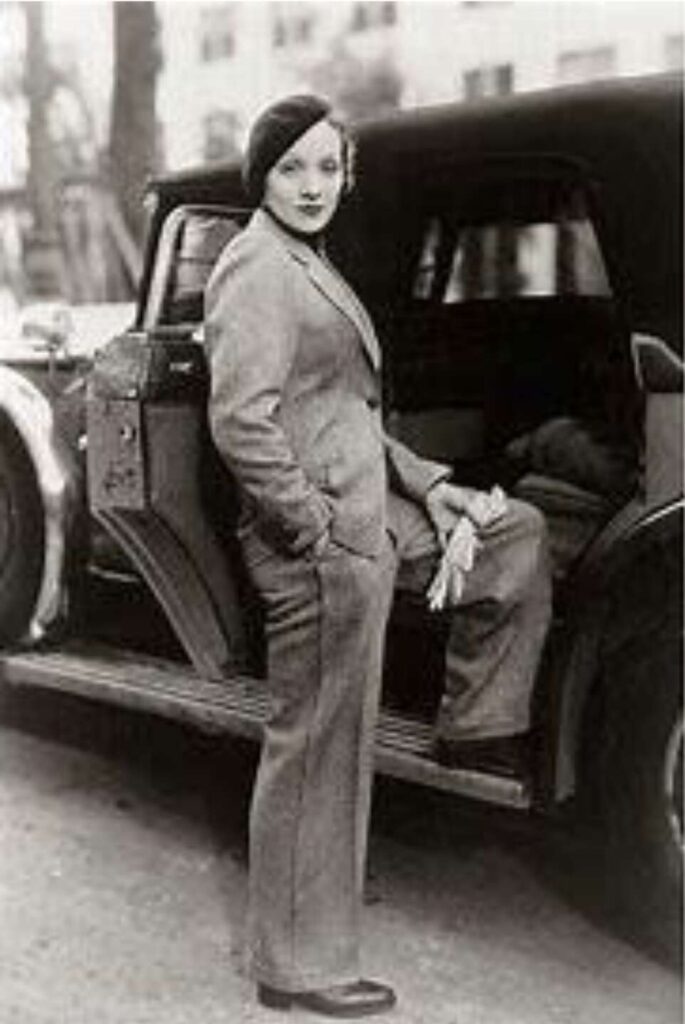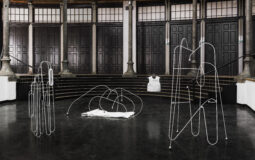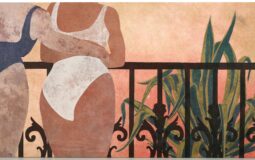“I’m not an actress, I’m a personality.”
Marlene Dietrich.
- born 27th of December 1901 in Berlin
- died 6th of May 1992 in Paris
Born as Marie Magdalene Dietrich and the younger of two sisters, she, when she was about eleven, combined her two names to one: Marlene.
From early on Marlene learned to play the violin and piano and was taught in French and English.
In 1907 she started school at the Auguste-Viktoria-school in Berlin.
Continuing her education she went to the Goethe Gymnasium in April 1917, which she left a year later without graduating.
In 1920 Marlene began an apprenticeship to be a concert violinist in Weimar, being taught by the violinist Robert Reitz.
A later she continued her training in Berlin but soon hat to stop because of a tendinitis. Which sparked her decision to become an actress.
At first she joined a group of young women with whom she traveled around Germany to play in different vaudevilles. Her wish though was to play at the theater, which was fulfilled in 1922 when she got her first role at the ‘Großes Schauspielhaus’ in Berlin, in the play ‘The Taming of the Shrew’ by Shakespeare.
“The theater is the only place where one can recite beautiful texts and beautiful verses like the ones by Rilke, which break my heart but give me courage at the same time.”
Besides playing as a background actress in a lot of plays this year, she also took private lessons by member of the Reinhardt-Ensembles, in rhythmic movement, gymnastics, fencing and voice training.
In 1923 she had her film debut in the movie ‘So sind die Männer’ (engl. “That’s how men are”).
While working on the movie ‘Tragödie der Liebe’ (engl. “Tragedy of Love”) she got to know Rudolf Sieber, with whom she fell in love with and married in the same year.
A year later their daughter and Marlene’s only child, Maria Elisabeth was born.
From 1927 on Marlene started to be also cast in leading roles in movies.
In 1929 Marlene played the role which made her known internationally, the Lola Lola in ‘Der blaue Engel’ (engl. ‘The blue angel’). The song “Ich bin von Kopf bis Fuß auf Liebe eingestellt” (engl. “Falling in Love Again”) became a worldwide hit.
After the success of the movie, she did seven more movies with the same director Josef von Sternberg, including ‘Marokko’, ‘Shanghai-Express’ and ‘Der Teufel ist eine Frau’ (engl. ‘Morocco’, ‘Shanghai Express’ and ‘The Devil Is a Woman’).
In the most famous scene of the movie ‘Morocco’ Marlene, dressed in a suit, kisses a woman (the scene was her idea by the way), which almost would have been taken out of the movie because of the very strict US-censorship at that time.
Marlene then had the idea, to convince the censors of the importance of that scene, to accept the flower the woman she kissed gifted her and then give the flower to her co-star, since otherwise the flower would have made no sense anymore.
In 1936 Marlene refused an offer by Goebbels to come back to Germany and continue her work as an actress there, also offering her high pay and free choice to choose the scripts and staff.
(Authors note: For context, in nationalistic Germany movies, books, etc. were strictly censored and were basically used as propaganda and to show how they wanted the world to be, their believes and decided what was allowed and what not.)
One year before the Second World War, Marlene changed her main European residence to Paris, renounced her German citizenship and became an American citizen.

When the Second World War started she decided, since she was not allowed to fight in the troops like men were, to do performances as a singer for the American soldiers near the front line, as a way to fight National Socialism. When the American troops were gaining ground in Germany she concisely escaped an arrest by the German Wehrmacht (name of the armed forces of the Third Reich from 1934 – 1945), while doing singing performances near the front line.
In Spring 1945 she returned to the USA and witnessed the end of the war from there. Two years later she received the Medal of Freedom from the US government and three years after that the conferment of the title “Chevalier de la Legion d’Honneur’ (engl. Knight of the Legion of Honour) from the French government, both for her dedication against the NSDAP – regime (National Socialist German Workers Party, the one which upheld the dictatorhip of Hitler).
With the start of the cold war her dedication became increasingly pacifistic, which is clearest visible in her covering the song “Sag mir, wo die Blumen sind” (engl. Where Have All The Flowers Gone), an anti-war song, the original being by Pete Seeger.
In 1948 she started acting again, until 1953. From then on she almost only performed as a singer, doing tours around the world.
In 1963 Marlene published her first book ‘ABC meines Lebens’ (engl. The ABC of my life) which consist of little texts, thoughts, life lessons, views and insights by her.
Due to a femoral neck fracture in 1975 she stopped going on stage and performing.
In 1978 she did her last movie ‘Schöner Gigolo, armer Gigolo’ (engl. Just a Gigolo).
After the filming was finished she withdrew from public completely, full moved to her apartment in Paris and only kept seeing her close family, friends and employees.
1979 her autobiography ‘Nehmt nur mein Leben’ (engl. Only take my Life) was published.
Marlene died on the 6th of May 1992, officially because of a heart and kidney failure. Her close friend Norma Bosquet, who visited her often in the last weeks of her life, assumed that Marlene probably ended her life by taking an overdose of sleeping pills.
Marlene Dietrich – Work

“Most people who make movies are in real life a bitter disappointment. I, on the other hand, am so much better in real life.”
The first thing that comes to mind when people hear ‘Marlene Dietrich’, beside her stunning beauty, is probably her deep, smoky voice, especially when she sings.
I really love Marlene’s singing. Her voice has something so unique about it that you just know that it’s her. It calms your soul, it’s sensual in a way but also very genuine and intimate. Like all walls are broken down for the time the song lasts and you get an insight into her heart, her life, what moves her and what is on her mind.
But her singing was also a topic for controversy, specifically the period when she was singing on the front lines in the Second World War and especially in Germany.
After the war ended many people in Germany couldn’t understand her dedication against the NSDAP-regime, since a lot of them perceived it as not only going against Hitler but also against common people and soldiers in Germany.
For a long period she was seen as a “traitor against her own people” by the people in Germany.
Marlene without a doubt is also an amazing actress.
Her acting style and the roles she played changed in the mid 1930s. Before she played more of a diva and inaccessible woman, at who’s feet everyone lies. When the movies she did at that time didn’t bring the success everyone expected, she changed her image to a though but accessible woman, singing songs with her smoky voice, who can take care of herself and is also not afraid of confrontation when it arises.
Her kissing a woman in the movie ‘Morocco’ was also a big deal back then. As mentioned before, it would have been almost taken out of the movie if not for Marlene’s idea, due to same sex encounters and relationships being seen as a criminal act and queer people being seen as sick.
So being able to keep it in there and showing was setting an important sign. Even more so since Marlene herself was bisexual and had, besides relationships and affairs with men, also many with women.
“In Europe, it doesn’t matter if you are a man or a woman – we make love with anyone we find attractive.”
Lastly, Marlene was also a style icon. She always reinvented herself style-wise and was setting fashion trends. The most famous one would be making wearing clothes which were seen for men only (like suits for example) socially acceptable as a woman.
It started with, again, the scene in ‘Morocco’ where she kisses the woman, she is wearing a suit.
With that and her also wearing suits and “men’s clothes” besides in her movie role she was one; breaking with traditional gender roles and two; revolutionizing the fashion world.
There even is a trouser which is known as the “Marlene – Hose” (engl. Marlene – trouser), which is a high in the waist sitting cloth trouser which Marlene wore often and was copied often by many fashion designers.
For me Marlene Dietrich is one of the most powerful women and artists of all times.
It is clear that she is in the driving seat of her life, she makes the decisions and lives it fiercely how she wants to.
At the same time she is not afraid to be vulnerable, to speak what is on her mind, what moves her, her experiences and to allow others to take a look into her heart and soul. She is real and raw and doesn’t hold back, which makes her even more beautiful.
She inspires me get in the driver’s seat and call the shots on how I want to live my life and how I want it to look like. To speak up for what I believe in. To be myself fully. And to break down all my walls and show my heart to the world, because in that ultimately lies so much power.
She is one of my heroes.
“I love quotations because it is a joy to find thoughts one might have, beautifully expressed by someone recognized wiser than oneself.”
Follow the Author on Instagram – https://www.instagram.com/lunamalunagri/
More from Art Uncovered – https://theuncoiled.com/category/series/art-uncovered/













No Responses